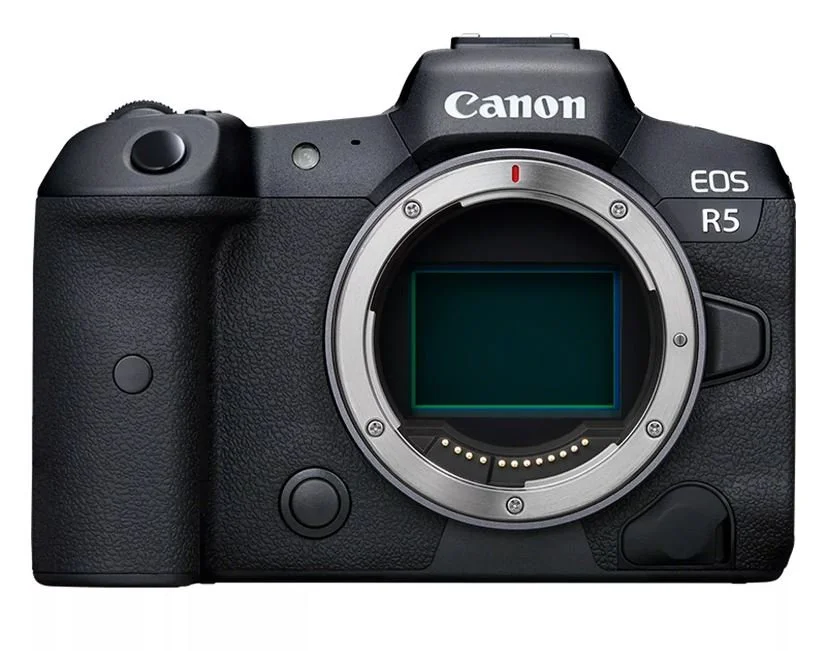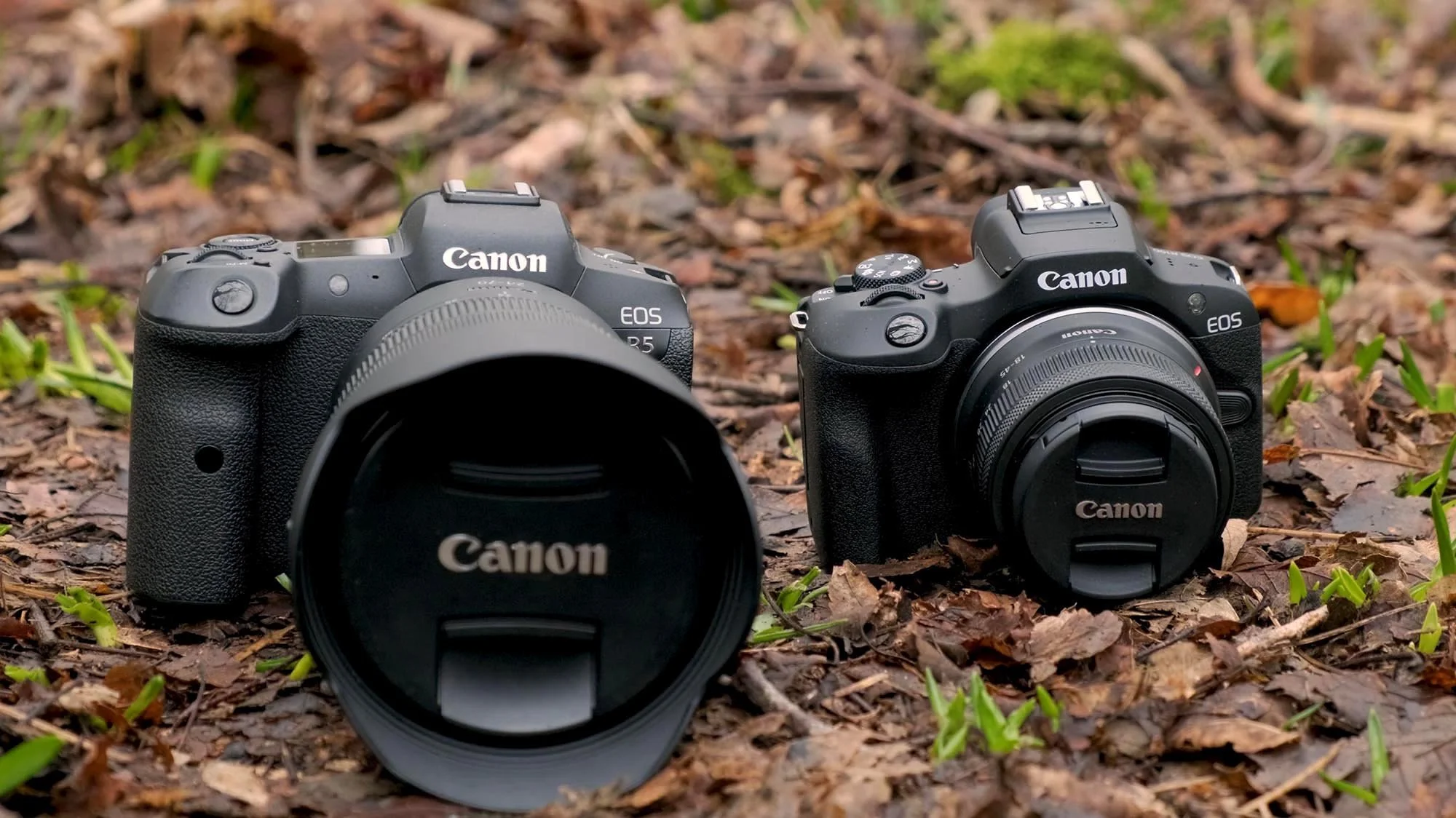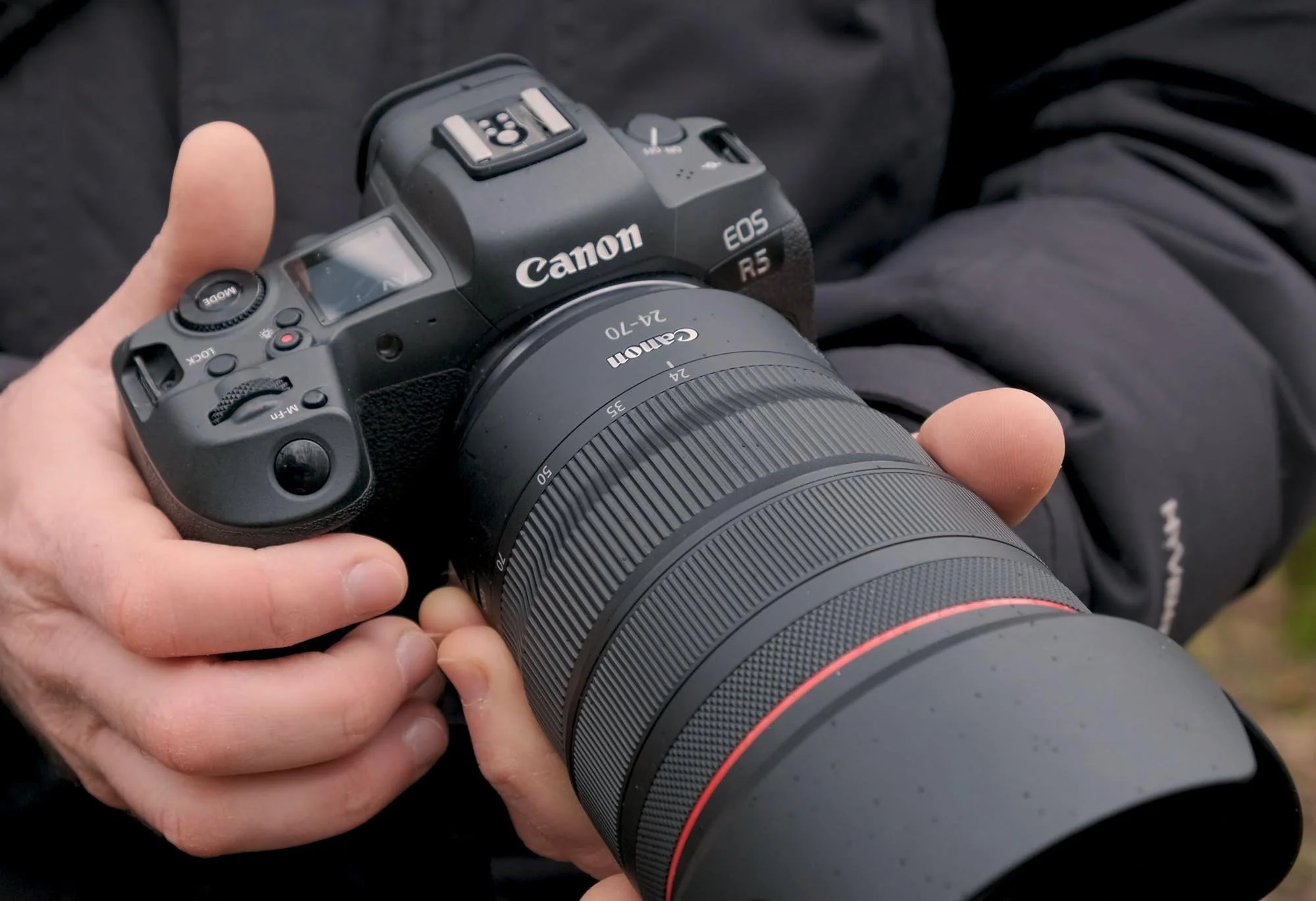Canon R5 VS R100 – Does 10x price mean 10x the quality?
When it comes to a Canon camera comparison you don’t get more extreme than this! Here we’ve put the Canon R5 and the Canon R100 head-to-head in a portrait challenge! The Canon R5 is priced around £6,500/$5,500 while the Canon R100 is priced at £600/$730. Do you really get ten times the quality in a camera for ten times the price? Let’s find out!
NB: Below there are some affiliate links and TSOP will receive a small percentage of some purchases made.
Does 10X the price mean 10X the quality?
Choosing a new camera can be frustrating – you want it to do everything, but you don’t want to pay way too much for what you need. Canon continues to push the boundaries with its innovative technologies and advancements – so how does their entry level camera, the R100 stand up against its professional counterpart, the Canon R5? In this blog post we’ll delve into the specs, sensor capabilities and overall user experience as we put them head-to-head to see the best we can get out of these two cameras.
R100 - Canon’s entry level mirrorless camera
R5 - Canon’s solution for pros.
The Test
This test is really about what you can get out of these cameras – it’s not a direct shot by shot comparison as that would be unfair. What we will do here is get the maximum out of these cameras in the conditions we test them in.
The Canon R5 is a full frame mirrorless camera aimed at professional photographers and the Canon R100 is a crop-sensor mirrorless camera for hobbyists and enthusiasts – if we judged it by this, the R5 would win by a country mile. The goal here is to see what you can achieve with the two options, plus as they say, it’s not the camera, it’s what you do with it.
There’s an additional challenge with the conditions of the shoot – it’s winter, it’s cold, its very cloudy and grey. Not ideal, so we’ve brought along a reflector to bounce some light back to the model.
The style of the shoot is a wintery-editorial fashion, much like something you’d see in a catalogue. Our model, Kanishk, has been styled with whites, brown, beiges and greens to harmonise with the woodland surrounding.
What’s the best that we can get out of the Canon R5 and Canon R100?
Get access to ALL our online courses - 1000’s of videos, worksheets, critiques of students work, personalised support and much more with our monthly membership.
The R100 with the 18-45mm kit lens – worth £600/$730
Canon R100 camera.
The Canon R100 caters to entry-level photographers looking for a compact and lightweight camera to kickstart their photographic journey. Despite its diminutive size, the R100 packs a punch with a 24.1MP APS-C sensor, 4K video capabilities, and autofocus functionality. One thing to be aware of though is it will crop the frame when capturing 4K video. Its lack of a swivel screen and limited autofocus options could be drawbacks for some users, but its affordability, portability and ability to work in fully manual make it a very attractive option for beginners – especially as you can find the R100 with a kit lens for around £600!
The first thing you notice about shooting with the Canon R100 is that it’s very compact and lightweight, which is great for those that don’t particularly want to lug around huge amounts of equipment when shooting. Generally, it fits in the hand quite nicely.
With this camera and kit lens, you’re not likely to get the super shallow depth of fields that you would with the f/2.8 lenses, but you can still get quite a nice effect, if you use the right settings. We’ve zoomed in to its maximum focal length of 45mm, set the white balance to cloudy, and set the widest aperture the lens offers at 45mm, which is f/6.3. The shutter speed it set to 1/250th second and the ISO has been set to auto to pick up the slack.
Shot 1
f/6.3 - 1/250th second - ISO 2000 - 45mm FL.
In the first shot, you can tell the ISO has crept up to 2000, which means the images are definitely at risk of grain. However using the denoise future in Lightroom, I’ve managed to remove some of the noise. This has however, left a softer sharpness than a low ISO image.
Shot 2
f/6.3 - 1/250th second - ISO 3200 - 44mm FL.
Here is a closer, ‘head shot’ example. The face is much clearer when zoomed in.
Shot 3
f/6.3 - 1/250th second - ISO2500 - 44mm FL.
For this picture we have used a compositional technique called ‘Frame within a Frame’ and we’ve placed the reflector just beneath the model to bounce a bit more light into his face.
Learn about the Frame within a Frame technique here.
NB: All prices are accurate on the time of this blogs release, please remember prices can change over time.
To buy any of the cameras featured in this blog, please click here.
Canon R5 with 24-70 f2.4 lens – worth £6,500/$5,500
Canon R5 camera.
The Canon R5 emerges as a favourite for professionals, offering a perfect balance of performance and versatility. It’s the mirrorless answer to the professional EOS 5D MkIV and a good all-rounder!
With a high-resolution 45MP full-frame sensor, blazing-fast 20 frames per second continuous shooting, and 8K RAW video capabilities, the R5 caters to a wide range of photographic and videographic needs. The R5 also boasts an ISO of up to 51200 – meaning it’s going to be fantastic for low light situations and its advanced autofocus tracking ensures sharp and accurate subject detection, whether it's human faces, animals, or fast-moving vehicles.
Offering a huge 45MP, the R5 is going to be brilliant for any photographer that needs to be able to do any large printing. It also has a dual card slot for CFexpress and SD cards, which is a fantastic contingency for pros when out shooting, because there’s nothing worse than an SD card failing when you’ve got to get a shot quickly.
The feature we’ve been most excited about is IBIS or In-Built Image Stabilisation of an industry-leading 8 stops. IBIS works by stabilizing the camera’s sensor within the camera body itself, compensating for small movements or shakes and reducing the amount of motion blur you’d get otherwise – it’s fantastic if you’re after sharp images at high shutter speeds. As well as this, the R5 also has IBIS High Resolution Mode, which will give you a 400MP image!
It goes without saying that the R5 has some seriously flashy specs – IBIS, 45mp and the latest in autofocus technology. It definitely holds up as the choice for pros. The R5 with the 24-70mm f/2.8 lens is much heavier than their entry level R100. It’s not compact, and the lens is definitely a lot weightier. We’ve used this lens as it’s a roughly similar focal length to that of the R100 kit lens.
For the settings, we’ve used the aperture priority mode and set the aperture to f/2.8 with a minimum shutter speed of 1/250th second and put the ISO on auto ISO. We’ll also be shooting at the lenses maximum focal length of 70mm and setting the WB to cloudy. The ISO shouldn’t be pushed anywhere near as far as the R100 because of the bigger aperture used here.
If you want to know more about focal lengths and their relationship with senor size, you can learn all about it here.
Shot 1
f/2.8 - 1/320th second - ISO 500 - 70mm FL.
We’ve used the eye tracking feature on these pictures, and it picks up the face and eyes with ease on the R5.
Shot 2
f/2.8 - 1/250th second - ISO400 - 70mm FL.
You can see the quality of the image through the camera – the clarity is fantastic, and the ISO isn’t as high and causing unwanted noise.
Shot 3
f/2.8 - 1/250th second - ISO400 - 70mm FL.
We’ve gone for a three quarter body shot here to get a bit more of the torso in. You can really see the crispness of the shot when you zoom in to 100%.
Image editing
Please be aware that all images are edited as I would do for any shoot using all the editing tools you have available in Lightroom and Photoshop. As stated before, this is not a shot for shot comparison, it’s about the maximum we can get out of these cameras, in the conditions we were in, and using all the knowledge and tools you have available in post processing.
Edited and unedited shot from the Canon R100
Side-by side comparisons of the fully edited images:
Conclusion
In conclusion, it’s quite obvious that the Canon R5 is a bit of a powerhouse for photographers – the full frame sensor and wider aperture gives you a fantastic looking result. This is exactly what you would want as a professional. The only drawbacks would be that it is very weighty and comes with a hefty price tag. Well worth considering if you’re a pro looking to upgrade to mirrorless.
The Canon R100, whilst it may not have all the bells and whistles as the R5, it definitely holds its own for any beginner! You still get a fantastic quality image for the price, it’s also a lot more convenient in terms of weight and size and still has certain featured like the face tracking – whilst being a 10th of the cost! You get a lot of camera for not a lot of money, which makes it a really attractive option to consider as a beginner photographer or hobbyist.
Which one would you choose? What do you think of the difference in quality? Let us know in the comments below!
If you like to buy any of these cameras, we recommend buying them from Wex Photo Video (UK). Please click here to purchase any of the cameras featured.
Like this? - Check out more free tutorials below
I hope you liked this blog on our Canon camera comparison the R5 vs the R100. If you did, please leave us a comment and support us by sharing it with your friends and subscribe to our newsletter at the bottom of this page for more.
We also have an excellent learning community on social media so please join us there as well.
Thanks for watching and remember – Learn more at The School of Photography.




















